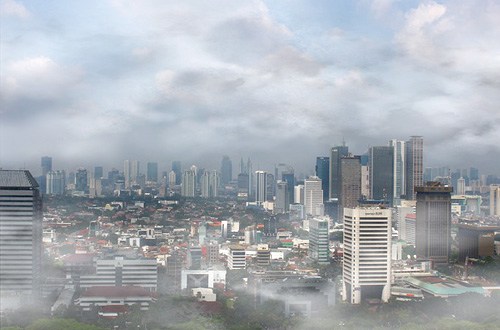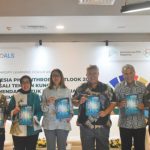Jakarta (Greeners) – A recent study revealed that Indonesia’s carbon emission is 19 percent less than current data acknowledged by UN’s panel of scientists, a senior official said in Jakarta, on Thursday (16/6).
The research, a joint study between Indonesia’s Forestry Faculty of Bogor Agricultural Institute (IPB), South Dakota State University (SDSU), Montana University, Palangkaraya University, Central Kalimantan District Administration, Kapuas District Administration, and Borneo Orangutan Survival Foundation, counted the country’s carbon emission level with different method that being referred by Intergovernmental Panel on Climate Change (IPCC).
Director of Greenhouse Gas Emission Inventory and Monitoring, Report and Verification of Ministry of Environment and Forestry, Krisfianti Linda Ginoga, said that Indonesia has interests in the research because it would strengthen the country’s confidence in delivering carbon emission reference level data, especially from peat land forest at international forums.
“The research obviously brings fresh air and boost Indonesia’s confidence in its report,” said Ginoga.
READ ALSO: Contradictory on Indonesia’s Commitment to Reduce Emission
Currently, Indonesia hold the title as third largest carbon emitter nation, after US and China, if included emission contribution from deforestation, forest fires, and peat lands. Without these emission factors, then Indonesia’s rank could fall to 22 or 24 in the emitter list.
“It shows the importance of protecting Indonesia’s peats from fires and [contribute] to reduce global emission carbon. In addition, to be able to provide accurate calculation method to measure emission levels from peat lands, which could be used to re-position Indonesia’s rank,” she added.
Meanwhile, director of climate change mitigation, Emma Rachmawaty, said that the research was part of evaluation on the country’s efforts.
Under UN Framework Convention on Climate Change (UNFCCC), Task Force Inventory (TFI) is tasked to gather all emission factor database (EFDB) based on their own characteristic which would be accessible to all countries.
“In October, Indonesia will be the host of TFI and there will be evaluation on emission factors counted by experts at the forum. They would be able to present their data and if it is traceable and knowledgeable then it could be recognized at international forum,” she said.
READ ALSO: Indonesia and Denmark Governments Collaborate on Tackling Environment Issues
NASA Tropical Peat Fire Research Project Incorporating, Quantifying and Locating Fire Emissions from Tropical Peat Lands: Filling a Critical Gap in Indonesia’s National Carbon Monitoring, Reporting and Verification (MRV) Capabilities for Supporting REDD+ Activities is funded by NASA and involved a research team led by Bambang Hero Saharjo of Silviculture Department of Bogor Agricultural Institute.
The research is using an equipment called Fourier Transform Infrared Spectroscopy (FTIR), Photoacoustic Extinctiometer (PAX) of 405 nm and 870 nm wavelengths, gravimetric filters, and Whole Air Sampling (WAS).
Up to date, peat fires emission is measured through Seiler and Cruizen equation which is adopted by IPCC. Nowadays, emission factor calculation has become crucial parameter in measure total emission from peat fires.
The result encourages for revisions in emission factors from IPCC, CO2 level dropped 8 percent, CH4 dropped to 55 percent, NH3 dropped to 86 percent, and CO increased 39 percent.
Current emission factors from IPCC for Indonesia’s peat fires are 1703 for CO2 and 20.8 for CH4. “The IPCC emission factor data was collected from lab’s research using samples of Sumatran peat in 2003,” said Saharjo.
Reports by Danny Kosasih



















































